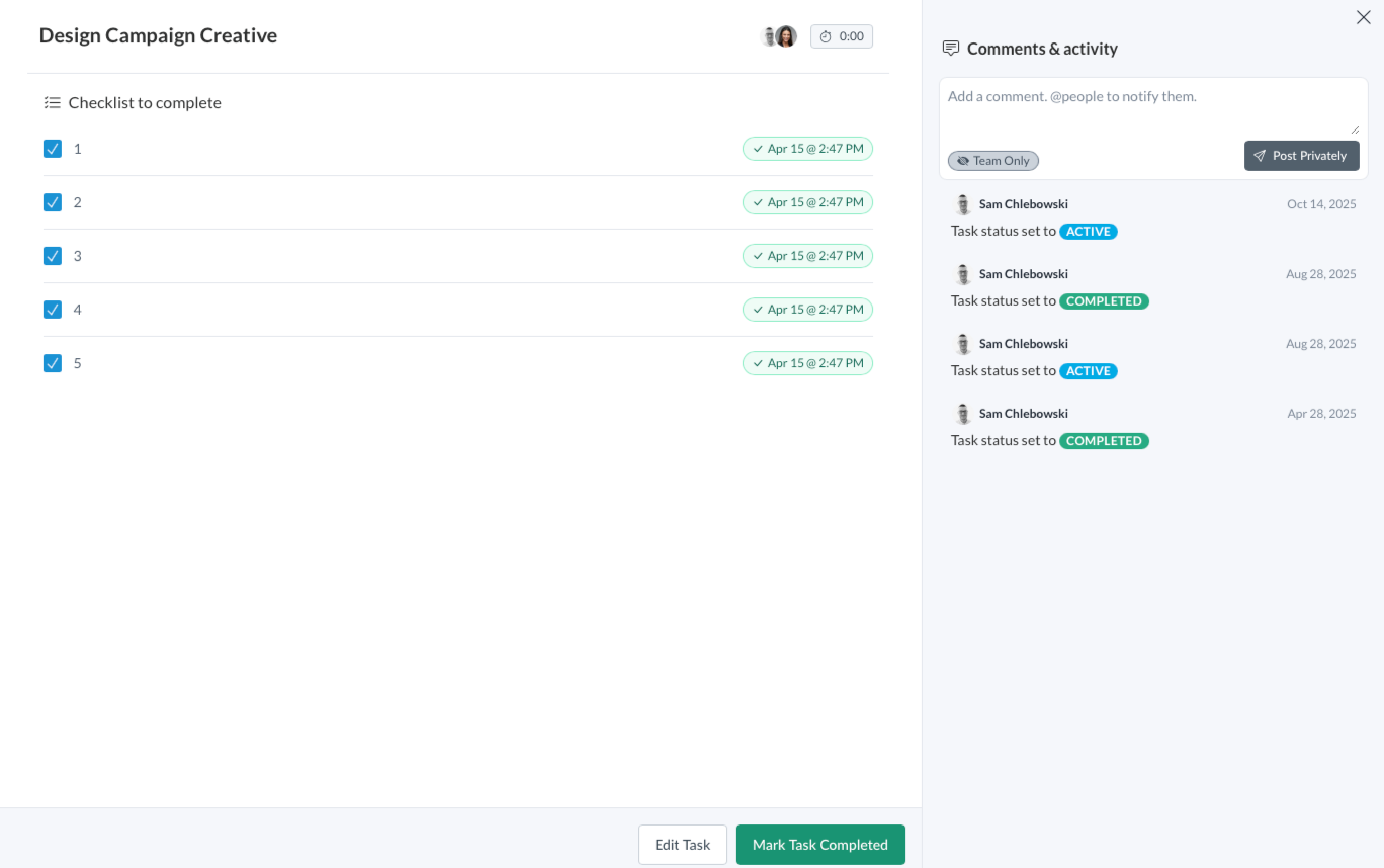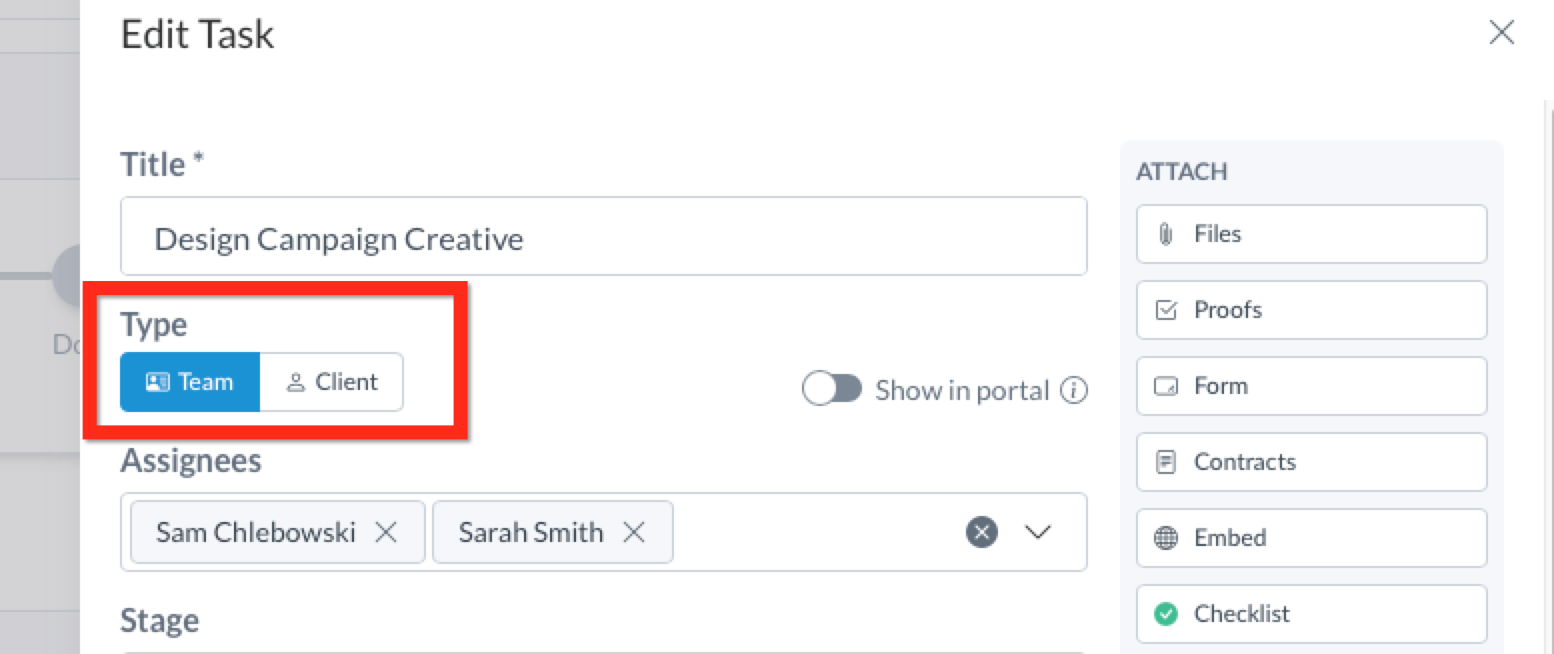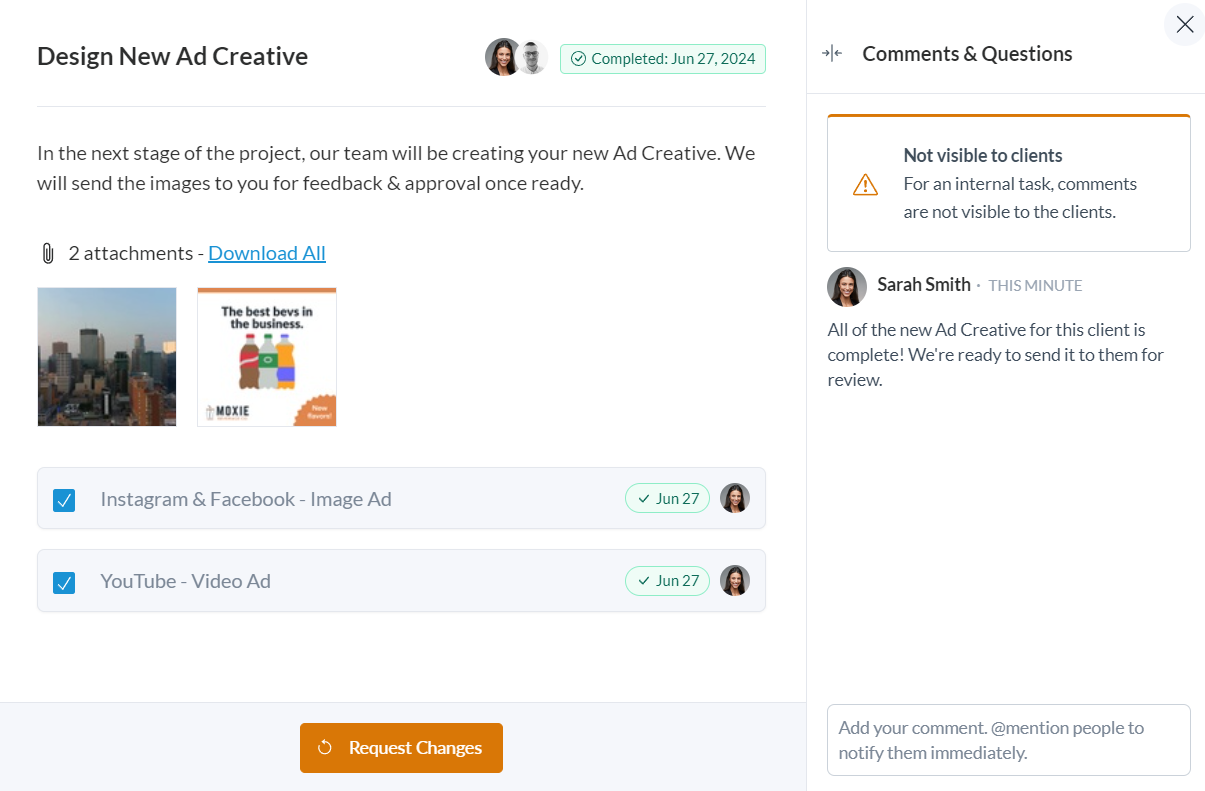Team Tasks
Instead of using separate platforms for client-facing and internal team collaboration, Motion.io's Team Tasks are internal tasks that empower your team to manage all communication, tasks, and files related to client projects in one place.
This article will explain how Team Tasks work and how you can use them in your Motion.io projects.

👋 Tip: To provide your clients with visibility into what your team is working on and when they can expect that work to be completed, the title and description of Team Tasks are visible to clients by default. If you'd like to hide Team Tasks entirely from clients, Motion.io allows you to do so. Click here to learn more.
How to Create Team Tasks
To create a Team Task, click the "Create task" button in a project. Then, make sure that under "Type" the word "Team" is in blue.

Like Client Tasks, your team can create Team Tasks in active projects and project templates. However, unlike Client Tasks, you can only assign Team Tasks to your own team members. To assign team members to tasks, you must first add them to the project.
Task Options for Team Tasks
While the Task Composer Internal and Client Task Composers are nearly identical, there are a few differences.
Task Visibility
The biggest difference is Task Visibility. When a Team Task is created, it is automatically hidden from the client unless the "Show in portal" toggle is activated.
If the "Show in portal" option is turned on, Team Tasks that are set to "Active," "Completed," and "In Review" will be visible to clients. However, the view is limited to only the Task's title, assignee(s), and description. All forms, files, and attachments will be accessible to only internal team members.

Require Team Review
When creating a team task, you have the option to require a team review before the task is marked as complete. You can assign a reviewer from your team during Task creation or editing.
Once the assigned team member marks the task as complete, it will automatically be sent to the designated reviewer for final approval. The Task status will appear as "In Review" until completion.

Attachments & Additions
No matter the Visibility Setting of an Internal Task, the clients cannot see any Form, Document, or Chat associated with it.

Creating Checklists
Click on "Checklist" under "Attachments" allows you to create a "to-do" list within a Task. When creating subtasks, you can assign them to specific team members and add individual due dates for each. Clients will not have visibility into Team Task Checklists.

Managing Team Tasks ("My Tasks" View)
The "My Tasks" page of your account displays all Team Tasks to which you are assigned, making it easy for you and your team members to keep track of what specific tasks you are responsible for.

The Tasks with a small checkbox and numbers next to the status means subtasks are built in. By clicking on that Task, you can see all the subtasks, assignees, due dates, and messages. Here is where you can mark off your completed subtasks or leave a comment that's only visible internally.

Calendar View in Tasks
You can also view all tasks in a Calendar View. Click the 'Calendar' tab in the top right corner of the Tasks page to see tasks by due date. Click the task to view it, or drag tasks to new dates to reschedule instantly.

.png)